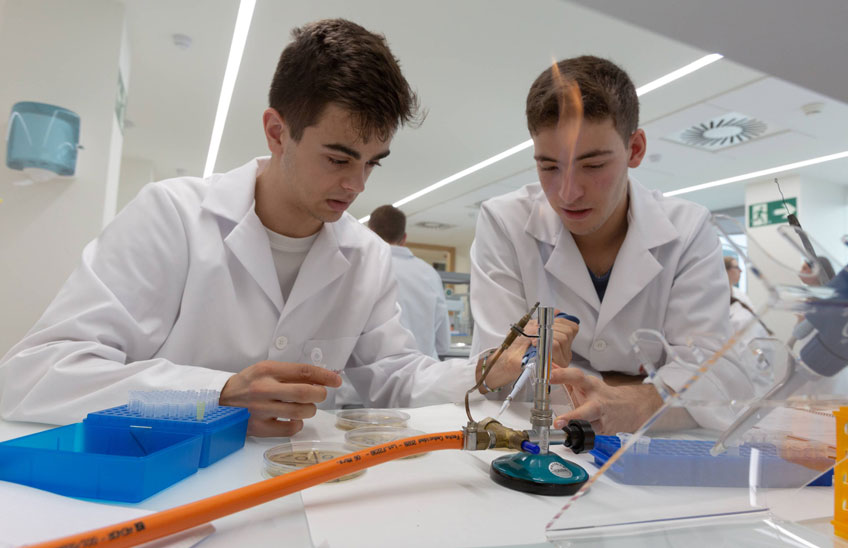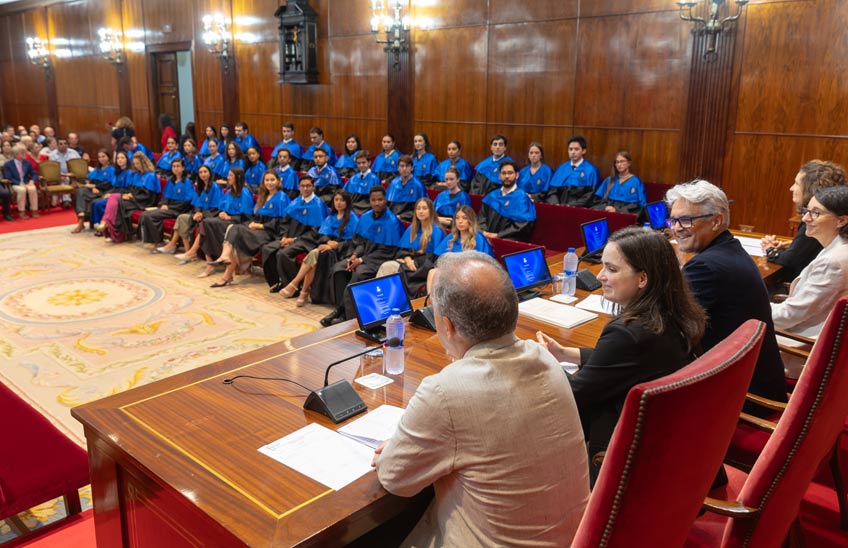Immune System Modified to Compete for Nutrients with Multiple Myeloma Tumor Cells
Researchers at the Cima University of Navarra demonstrate in an experimental study that this strategy increases antitumor efficacy.

FotoManuel Castells<br>/Investigadores del Cima Universidad de Navarra que han participado en el trabajo publicado en Blood
06 | 10 | 2025
Researchers at the Cima University of Navarra have succeeded in enhancing the effect of immunotherapy for multiple myeloma, a subject of cancer that affects the bone marrow. The work, confirmed in an animal model and in patient samples, demonstrates that the Genetics modification of lymphocytes so that they capture more efficiently the essential nutrients for their growth, increases the antitumor efficacy.
Tumors need large amounts of glucose and amino acids to grow. To be more efficient, they have developed transporters that allow them to efficiently uptake these nutrients available in the tumor environment. In this context, when administering an immunotherapy treatment with CAR-T cells, these cells encounter such a low nutrient microenvironment that they cannot function properly and attack the tumor, thus reducing the efficacy of the treatment.
"Some tumors, such as multiple myeloma, are addicted to glutamine, one of these nutrients, and base their entire growth on its consumption. In addition, immune system cells, particularly lymphocytes, also need glutamine to perform their anti-tumor function. However, since tumor cells are more efficient at capturing this amino acid, they limit the ability of lymphocytes to fight cancer," explains Dr. Juan José Lasarte. Dr. Juan José Lasarteco-director of the Immunology and Immunotherapy Program of the Cima and director of the work.
The Cima study focused on increasing the efficiency of lymphocytes to capture glutamine in the tumor environment. "To do this, we have genetically modified these cells so that they overexpress a transporter for glutamine and can proliferate and exert their antitumor action better. This is an improvement on a treatment that is already C clinic for the treatment of multiple myeloma. With this strategy, in which we reprogram the lymphocyte so that it can use glutamine as a source energy, we are able to improve the results of the treatment. This improved efficacy has been tested in an animal model of multiple myeloma developed by the group Dr. José A. Martínez Climent, MD. Dr. José A. Martínez Climent at Cima, and in patient samples in a project in partnership with the Clínica Universidad de Navarra", explains Dr. Lasarte. The work has been published in the latest issue of the scientific journal Blood.
Application in other tumors
In the opinion of the Cima scientists, this approach could also be effective for other tumors that use glutamine as a source of energy.
The study has received public funding from the Government of Navarraproject SOCRATHeS), the Ministry of Science and Innovation and the European Union and has been carried out in the framework of the CIBER Cancer (CIBERONC) and CIBERehd. It has also been supported by institutions such as the Paula & Rodger Riney Foundation, the Spanish association Against Cancer and the social action of Caja Rural de Navarra.
bibliographicreference letter
Blood. 2025 Sep 19:blood.2024027496. doi: 10.1182/blood.2024027496.
- Reprogramming glutamine metabolism enhances BCMA-CART cell fitness and therapeutic efficacy in multiple myeloma.



